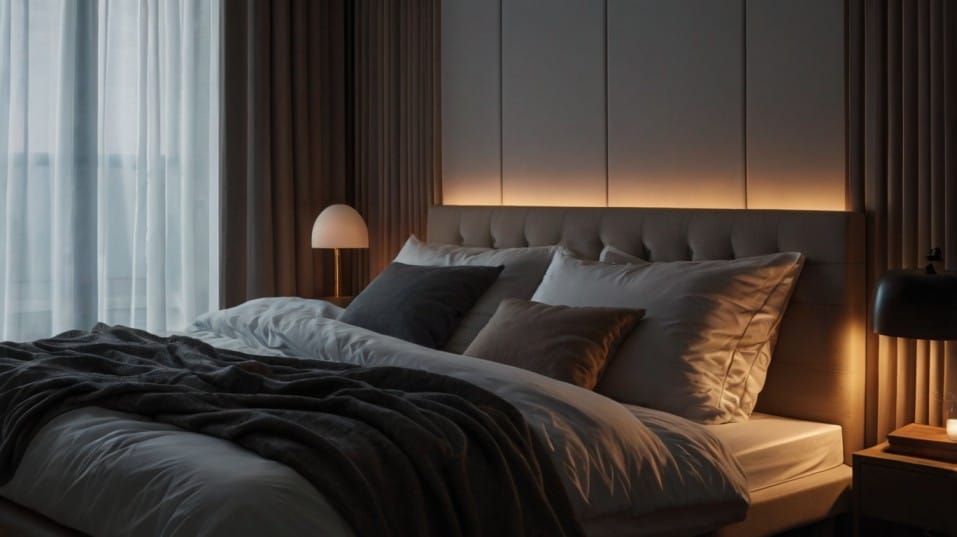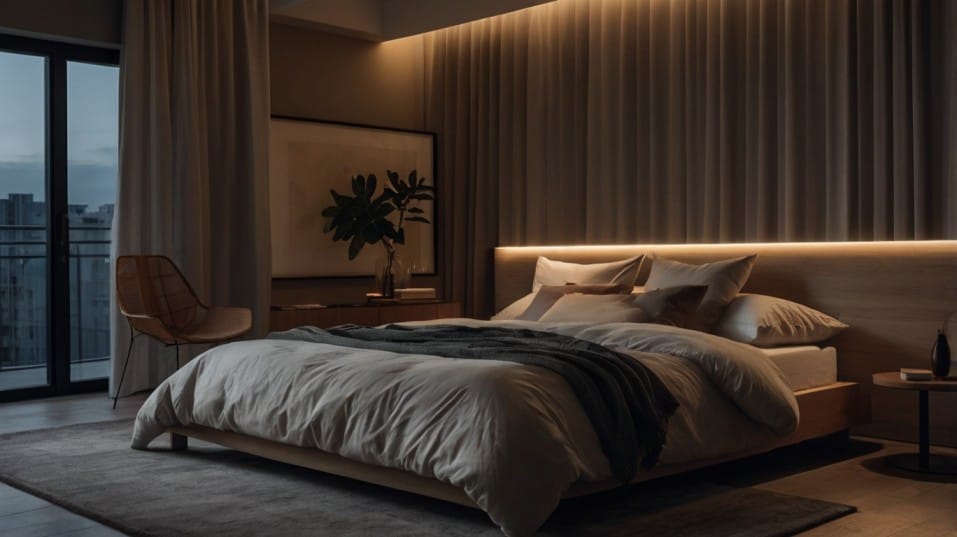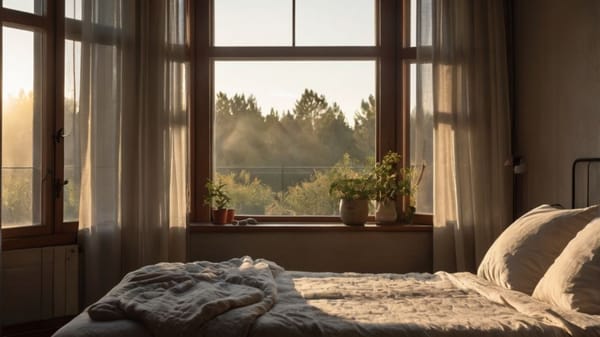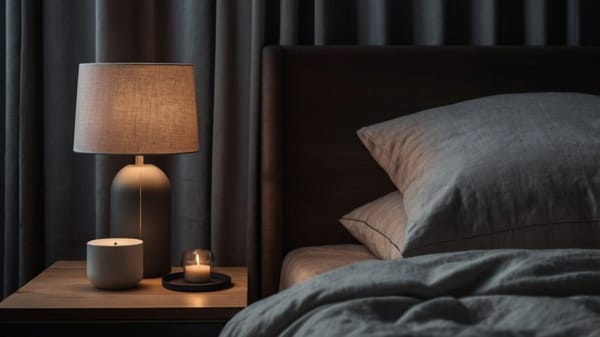How to Create a Bedroom That Signals ‘Sleep Only’
Want deeper, faster sleep? Transform your bedroom into a no-stress, sleep-only zone with science-backed tips that actually work.

What if your bedroom could train your brain to fall asleep faster—without supplements, routines, or effort?
If sleep feels harder than it should, your space might be sending mixed signals. A bedroom should whisper one thing: sleep happens here.
Not scrolling. Not stress. Just rest. When your environment gets that message right, your body follows. You don’t need perfection—just a setup that makes deep, refreshing sleep the default.
First: Stop Letting Your Bedroom Multitask
Most people treat their bedroom like an all-purpose bunker: work Zooms, late-night binge sessions, texting marathons, online shopping, doom-scrolling. Sound familiar?
If your body walks into the bedroom and thinks, “I wonder what we’re doing tonight?” — you’ve already lost half the battle.
Here’s what sleep researchers call stimulus control: your brain forms strong associations between environments and activities.
Use your bed for email, social media, or even just idle scrolling, and you teach your body that lying down isn’t the cue to sleep—it’s the cue to stay mentally alert.
The fix is radical simplicity. Strip your bedroom of any function that doesn’t serve sleep (or sex). No TV. No desk.

No “charging station” blinking like a tiny airport runway. Even clutter—laundry piles, scattered books, unpaid bills—can subtly trigger stress and delay your wind-down. What you see before bed matters more than you think.
Want sleep to come easier? Make your bedroom boring. Calm. Predictable. Your bed should become a cue so strong that just lying on it makes your eyelids feel heavy. That’s not an exaggeration—that’s the power of a well-trained brain.
Master the Temperature Sweet Spot
You can’t drift off if your body feels like it’s overheating under a weighted blanket or freezing in a drafty room.
Core body temperature naturally drops in the evening as part of your circadian rhythm. Your environment should support that shift, not fight it.
The science says the ideal sleep temperature is around 60–67°F (15–19°C). Of course, comfort varies slightly from person to person—but the principle doesn’t.
Cooler temps signal melatonin release and deeper sleep. Overheating, on the other hand, leads to more awakenings, shallow rest, and even vivid dreams that make you feel less recovered.
How to Hit the Right Temp
Start by adjusting your thermostat. Can’t do that? Use a fan, open a window, or invest in breathable sheets and a cooling mattress topper.
Skip synthetic bedding—it traps heat. Look for natural fibers like cotton, bamboo, or linen. They wick moisture, breathe better, and feel lighter on your skin.
If your feet get cold, wear socks. Seriously. Warm feet help dilate blood vessels, which cools your core. It’s simple biology, and it works fast.
Light: Your Body’s Built-In Alarm Clock
Your body doesn’t just use light to see—it uses it to know what time it is. This is why bad lighting habits wreck sleep.
Artificial light (especially the blue kind from phones and TVs) suppresses melatonin, tricks your brain into thinking it’s still daytime, and delays your ability to fall asleep.
How to Fix Your Lighting Environment
Install blackout curtains. Not “light-filtering” or “room-darkening”—blackout. Your goal is total darkness, like a cave. Even streetlights or glowing signs outside your window can cue your brain to stay alert.
Can’t control your windows? Get a quality sleep mask—one that fits well and blocks side light. Avoid cheap ones that press on your eyes or slip off halfway through the night.
Also, rethink your pre-bed lighting. Overhead lights are bright and blue-shifted. Use a low, warm-toned bedside lamp instead.
Better yet, use dimmable bulbs and start turning them down 60–90 minutes before bed. This mimics sunset and helps cue your internal clock to wind down.
Bonus move: remove all glowing electronics. Phone chargers. Standby lights. LED clocks. Even a faint light in a dark room can impact sleep depth. If you must have a clock, go analog—or one with a red, low-luminance display.
Get Strategic with Sound
Sound is another environmental cue your brain reacts to even while you’re asleep. Think of sleep like being in airplane mode—not totally off, but disconnected from outside input. Unexpected noise? That’s a glitch in the system.
The problem isn’t just noise—it’s inconsistent noise. Your brain can get used to the hum of a fan or city traffic. But a dog barking at 3 a.m. or a slamming door can snap you into lighter sleep stages—or wake you outright.
How to Manage Night Noise
Solution one: block it. Earplugs work, if you find the right pair. Moldable silicone ones tend to be more comfortable than foam.
Solution two: mask it. White noise machines, pink noise apps, or even a steady fan can create a sonic buffer that keeps unpredictable sounds from breaking through.
Whatever you choose, consistency matters. Don’t use a noise machine that turns off after 30 minutes. Your brain will notice the shift. Keep your sleep sound environment steady from lights-out to wake-up.
Engage Your Other Senses
Sight and sound get all the attention. But smell, touch, and even the “feel” of the room play key roles too.
Smell: Train Your Brain with Scent
Let’s start with scent. Your nose connects directly to the limbic system—your brain’s emotional center. Certain scents (like lavender, sandalwood, or chamomile) trigger a relaxation response that helps the nervous system shift into rest mode.
A diffuser can help—but don’t go overboard. One or two drops is plenty. You’re not trying to start an aromatherapy blog. You’re just training your brain to associate this smell with sleep.
Touch: Comfort That Cues Rest
Touch is also underrated. The right bedding can transform your entire wind-down ritual. Lightweight, breathable sheets. A mattress that supports without pressure.
A pillow that matches your sleep position (back, side, stomach—it matters). These details tell your body: this is where we recover.
Weighted blankets work for some people, especially if you deal with anxiety or restless nights. They simulate deep pressure touch, which calms the nervous system. But they can also run hot—use with caution if you tend to overheat.
Even the way you enter your bedroom matters. Low light. Clean sheets. No clutter. Quiet. Cool. Your nervous system registers every one of these signals—and stacks them toward sleep.
Final Thoughts: Make Your Bedroom Work for You
Here’s the bottom line: if you want better sleep, you can’t treat your bedroom like a side character in your routine. It is the routine. The space you sleep in either reinforces rest or fights it.
Strip it down to the essentials. Create total darkness. Set the right temperature. Ditch the distractions. Engage your senses in subtle, deliberate ways. This isn’t about perfection—it’s about consistency.
When your bedroom screams “sleep only,” your brain listens. Your body follows. You wake up sharper, stronger, and ready to do more with your day.
Start tonight. Look around your space. Pick one thing that doesn’t belong—and get it out. Replace it with something that tells your body, “we’re here to rest.” Then keep going. Better sleep isn’t a mystery—it’s an environment.




